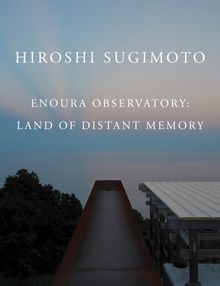| |||||||||||||||||||||||||||||||||
PHOTOGRAPHY MONOGRAPHS
|
|
in stock $65.00 Free Shipping UPS GROUND IN THE CONTINENTAL U.S. |
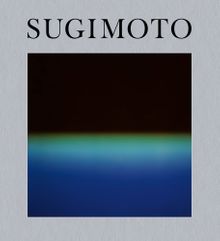 Hiroshi Sugimoto: Time Machine
Hiroshi Sugimoto: Time Machine
Published by Hatje Cantz.
Text by James Attlee, Geoffrey Batchen, Allie Biswas, David Chipperfield, Edmund de Waal, Mami Kataoka, Ralph Rugoff, Lara Strongman, Margaret Wertheim.
Through his expansive exploration of the possibilities of still images, Hiroshi Sugimoto has created some of the most alluringly enigmatic photographs of our time—pictures that are meticulously crafted and deeply thought-provoking, familiar yet tantalizingly ambiguous. Hiroshi Sugimoto: Time Machine is a comprehensive survey of work produced over the past five decades, featuring selections from all of Sugimoto’s major series, as well as lesser-known works that illuminate his innovative, conceptually driven approach to making pictures.
Texts by international writers, artists and scholars?including Geoffrey Batchen, Edmund de Waal, Mami Kataoka, Ralph Rugoff, Lara Strongman and Margaret Wertheim?highlight his work’s philosophical yet playful inquiry into the nature of representation and art, our understanding of time and memory, and the paradoxical character of photography as a medium so well suited to both documenting and invention.
Hiroshi Sugimoto (born 1948) has exhibited extensively in major museums and galleries throughout the world, and his work is held in numerous public collections, including the Metropolitan Museum of Art, New York; Museum of Contemporary Art, Tokyo; National Gallery, London; National Museum of Modern Art, Tokyo; Smithsonian, Washington, DC; and Tate, London, among others. Sugimoto divides his time between Tokyo and New York City.
PUBLISHER
Hatje Cantz
BOOK FORMAT
Hardcover, 9.5 x 11 in. / 216 pgs / 130 bw.
PUBLISHING STATUS
Pub Date 12/19/2023
Active
DISTRIBUTION
D.A.P. Exclusive
Catalog: FALL 2023 p. 63
PRODUCT DETAILS
ISBN 9783775755320 TRADE
List Price: $60.00 CAD $87.00
AVAILABILITY
In stock
in stock $60.00 Free Shipping UPS GROUND IN THE CONTINENTAL U.S. |
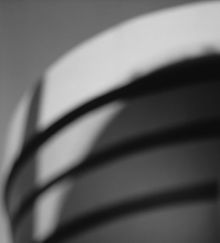 Hiroshi Sugimoto: Architecture
Hiroshi Sugimoto: Architecture
Published by Damiani/MW Editions.
Text by Hiroshi Sugimoto.
In 1997, Hiroshi Sugimoto (born 1948) began a series of photographs of significant works of modernist architecture, intending “to trace the beginnings of our age via architecture.” One of the hallmarks of Sugimoto’s work is his technical mastery of the medium. He makes photographs exclusively with an 8 x 10" view camera, and his silver gelatin prints are renowned for their tonal range, total lack of grain, wealth of detail and overall optical precision. In making the Architecture photographs, however, he inverted his usual process: “Pushing out my old large-format camera’s focal length to twice-infinity ... I discovered that superlative architecture survives the onslaught of blurred photography. Thus I began erosion-testing architecture for durability, completely melting away many of the buildings in the process.”
In this volume, which includes 19 previously unpublished images, the language of architectural modernism is distilled in photographs of Le Corbusier’s Villa Savoye, Mies van der Rohe’s Seagram Building and Frank Gehry’s Guggenheim Bilbao. By virtue of their blurriness and lack of color, the images strip down buildings to their essence, what we might imagine was the architect’s first, pure vision of form. The details of construction and imperfections that are a natural result of a massive, collaborative human undertaking are absent, and instead light and shadow define the forms of these buildings. The Architecture photographs continue the artist’s longstanding investigations of the passage of time and history. Are these monuments to human ingenuity and the power of the industrial age as eternal as they seem?
PUBLISHER
Damiani/MW Editions
BOOK FORMAT
Clth, 10 x 11 in. / 160 pgs / 90 bw.
PUBLISHING STATUS
Pub Date 9/17/2019
Out of stock indefinitely
DISTRIBUTION
D.A.P. Exclusive
Catalog: FALL 2019 p. 37
PRODUCT DETAILS
ISBN 9788862086585 TRADE
List Price: $60.00 CAD $85.00
AVAILABILITY
Not available
STATUS: Out of stock indefinitely. |
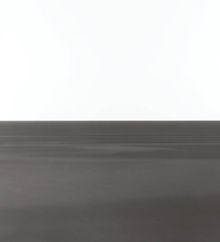 Hiroshi Sugimoto: Seascapes
Hiroshi Sugimoto: Seascapes
Published by Damiani/MW Editions.
Text by Munesuke Mita.
This edition of Hiroshi Sugimoto's (born 1948) popular photography series is expanded and updated from the out-of-print first edition, including five previously unpublished photographs. For more than 30 years, Sugimoto has traveled the world photographing its seas, producing an extended meditation on the passage of time and the natural history of the earth reduced to its most basic, primordial substances: water and air. Always capturing the sea at a moment of absolute tranquility, Sugimoto has composed all the photographs identically, with the horizon line precisely bifurcating each image. The repetition of this strict format reveals the uniqueness of each meeting of sea and sky, with the horizon never appearing exactly the same way twice. The photographs are romantic yet absolutely rigorous, apparently universal but exceedingly specific. In the introduction Munesuke Mita writes, "It is clear that Sugimoto's Seascapes possess a vitality that stands in contrast to Rothko's last paintings, which took the reductionist passion of modernism—the desire to erase everything—to its extreme."
Hiroshi Sugimoto has exhibited extensively in major museums and galleries throughout the world, and his work is held in numerous public collections, including the Metropolitan Museum of Art, New York; Museum of Contemporary Art, Tokyo; National Gallery, London; National Museum of Modern Art, Tokyo; Smithsonian, Washington, DC; and Tate, London, among others. Sugimoto divides his time between Tokyo and New York City.
PUBLISHER
Damiani/MW Editions
BOOK FORMAT
Clth, 10 x 11 in. / 280 pgs / 225 bw.
PUBLISHING STATUS
Pub Date 2/19/2019
Active
DISTRIBUTION
D.A.P. Exclusive
Catalog: SPRING 2019 p. 20
PRODUCT DETAILS
ISBN 9788862086240 TRADE
List Price: $80.00 CAD $110.00
AVAILABILITY
Out of stock
STATUS: Out of stock Temporarily out of stock pending additional inventory. |
 Hiroshi Sugimoto: Portraits
Hiroshi Sugimoto: Portraits
Published by Damiani/MW Editions.
Text by Maria Morris Hambourg.
At first glance, Hiroshi Sugimoto’s photographic portrait of King Henry VIII of England is arresting: Sugimoto’s camera has captured the tactility of Henry’s furs and silks, the elaborate embroidery of his doublet, the light reflecting off of each shimmering jewel. The contours of the king’s face are so lifelike that he appears to be almost three-dimensional. It seems as though the 21st-century artist has traveled back in time nearly 500 years to photograph his royal subject.
But Sugimoto’s portraits of historical figures are fictions, at least twice removed from their subjects, made by photographing a wax figure that has been created by a sculptor from either a photographic portrait or a painted one. Sugimoto shoots his subjects in black and white, posing the “sitter” against a black background, amplifying the illusion that we are viewing a contemporary portrait in which the subject has stepped out of history.
This volume presents the photographer’s images of the wax figures alongside a selection of portraits of living subjects and photographs of memento mori. As with his other major bodies of work—Dioramas, Seascapes and Theaters—Sugimoto’s Portraits address the passage of time and history, and question the nature of the “reality” captured by the camera. Hiroshi Sugimoto: Portraits is the fourth in a series of books on Sugimoto’s major bodies of work and presents 70 photographs, 7 of which have never before been published.
Hiroshi Sugimoto (born 1948) has helped define what it means to be a multidisciplinary contemporary artist, his photographs blurring the lines between photography, painting, installation and architecture. Sugimoto divides his time between Tokyo and New York City.
PUBLISHER
Damiani/MW Editions
BOOK FORMAT
Clth, 10 x 11 in. / 120 pgs / illustrated throughout.
PUBLISHING STATUS
Pub Date 3/27/2018
Out of stock indefinitely
DISTRIBUTION
D.A.P. Exclusive
Catalog: SPRING 2018 p. 30
PRODUCT DETAILS
ISBN 9788862085823 TRADE
List Price: $50.00 CAD $67.50
AVAILABILITY
Not available
STATUS: Out of stock indefinitely. |
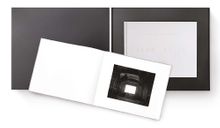 Hiroshi Sugimoto: Snow White
Hiroshi Sugimoto: Snow White
Limited Edition
Published by Damiani/Matsumoto Editions.
Published in an edition of 400 signed and numbered copies, Snow White is a unique collector’s edition book containing 75 artworks by Hiroshi Sugimoto (born 1948). All of the photographs in Snow White are from his Theaters series and include many of his well-known photographs of classic movie palaces and drive-ins, along with new photographs of Italian opera houses and abandoned theaters. Sugimoto began the Theaters series four decades ago. To make these images, he opens the shutter inside the dark theater (or in the case of the drive-ins, outside at night) for the duration of the movie. The running movie is the only source of light bringing out the architectural details of these spaces. The Disney movie Snow White was running when Sugimoto photographed “Palace Theater, Gary (2015), one of the abandoned theaters that is reproduced here.
In this book, Sugimoto reveals for the first time the movies that were screened when he took these photographs and the exposure time of each photograph. Each artwork in Snow White is accompanied by the name of the movie, its running time and a short text about each written by Sugimoto. The black-and-white photographs are hand-tipped onto the pages and the book is bound in silk cloth. Each copy contains a numbered colophon signed by Sugimoto.
PUBLISHER
Damiani/Matsumoto Editions
BOOK FORMAT
Slip, clth, 10.5 x 14 in. / 160 pgs / 75 tritone.
PUBLISHING STATUS
Pub Date 12/26/2017
Active
DISTRIBUTION
D.A.P. Exclusive
Catalog: SPRING 2017 p. 61
PRODUCT DETAILS
ISBN 9788862085205 SDNR30
List Price: $750.00 CAD $995.00
AVAILABILITY
In stock
in stock $750.00 Free Shipping UPS GROUND IN THE CONTINENTAL U.S. |
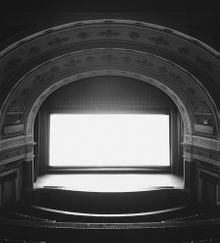 Hiroshi Sugimoto: Theaters
Hiroshi Sugimoto: Theaters
Published by Damiani/Matsumoto Editions.
Text by Hiroshi Sugimoto.
In the late 1970s, as Hiroshi Sugimoto was defining his artistic voice, he posed a question to himself: “Suppose you shoot a whole movie in a single frame?” The answer that came to him: “You get a shining screen.” For almost four decades, Sugimoto has been photographing the interiors of theaters using a large-format camera and no lighting other than the projection of the running movie. He opens the aperture when a film begins and closes it when it ends. In the resulting images, the screen becomes a luminous white box and the ambient light subtly brings forward the rich architectural details of these spaces.
Sugimoto began by photographing the classic movie palaces built in the 1920s and ‘30s, their ornate architectural elements a testament to the cultural importance of the burgeoning movie industry. He continued the series with drive-in theaters. In the last decade, Sugimoto has photographed historic theaters in Europe as well as disused theaters that show the ravages of time. Taken together, these photographs present an extended meditation on the passage of time, a recurring theme in his artwork. Theaters, the third in a series of books on Sugimoto’s art, presents 130 photographs, 21 of which have never before been published.
Hiroshi Sugimoto (born 1948) has exhibited extensively in major museums and galleries throughout the world, and his work is held in numerous public collections, including The Metropolitan Museum of Art, New York; Museum of Contemporary Art, Tokyo; National Gallery, London; National Museum of Modern Art, Tokyo; Smithsonian, Washington, DC; and Tate, London, among others. Sugimoto divides his time between Tokyo and New York City.
PUBLISHER
Damiani/Matsumoto Editions
BOOK FORMAT
Hardcover, 10 x 11 in. / 176 pgs / 130 bw.
PUBLISHING STATUS
Pub Date 9/27/2016
Out of print
DISTRIBUTION
D.A.P. Exclusive
Catalog: FALL 2016 p. 34
PRODUCT DETAILS
ISBN 9788862084772 TRADE
List Price: $60.00 CAD $79.00
AVAILABILITY
Not available
STATUS: Out of print | 00/00/00 For assistance locating a copy, please see our list of recommended out of print specialists |
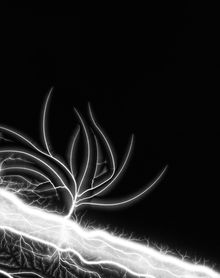 Hiroshi Sugimoto: The Long Never, Lightning Fields 289
Hiroshi Sugimoto: The Long Never, Lightning Fields 289
Collector's Edition
Published by Damiani.
Text by Jonathan Safron Foer.
PUBLISHER
BOOK FORMAT
Boxed, Hardcover, 10.5 x 14 in. / 140 pgs / 65 duotone.
PUBLISHING STATUS
Pub Date 4/26/2016
Active
DISTRIBUTION
D.A.P. Exclusive
Catalog: SPRING 2016 p. 59
PRODUCT DETAILS
ISBN 9788862084697 SDNR20
List Price: $11,000.00 CAD $14,300.00
AVAILABILITY
In stock
in stock $11,000.00 Free Shipping UPS GROUND IN THE CONTINENTAL U.S. |
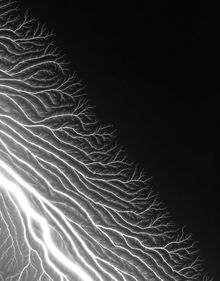 Hiroshi Sugimoto: The Long Never, Lightning Fields 304
Hiroshi Sugimoto: The Long Never, Lightning Fields 304
Collector's Edition
Published by Damiani.
PUBLISHER
BOOK FORMAT
Boxed, Hardcover, 10.5 x 14 in. / 140 pgs / 65 duotone.
PUBLISHING STATUS
Pub Date 4/26/2016
Active
DISTRIBUTION
D.A.P. Exclusive
Catalog: SPRING 2016 p. 59
PRODUCT DETAILS
ISBN 9788862084604 SDNR20
List Price: $11,000.00 CAD $14,300.00
AVAILABILITY
In stock
in stock $11,000.00 Free Shipping UPS GROUND IN THE CONTINENTAL U.S. |
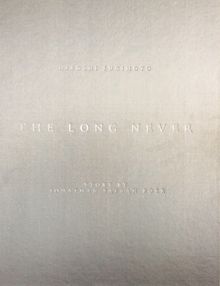 Hiroshi Sugimoto: The Long Never
Hiroshi Sugimoto: The Long Never
Published by Damiani/Matsumoto Editions.
Text by Jonathan Safran Foer.
PUBLISHER
Damiani/Matsumoto Editions
BOOK FORMAT
Clth, 10.5 x 14 in. / 140 pgs / 65 bw / LTD ED of 360 Signed & Numbered
PUBLISHING STATUS
Pub Date 9/29/2015
Out of stock indefinitely
DISTRIBUTION
D.A.P. Exclusive
Catalog: FALL 2015 p. 95
PRODUCT DETAILS
ISBN 9788862083843 SDNR30
List Price: $750.00 CAD $995.00
AVAILABILITY
Not available
STATUS: Out of stock indefinitely. |
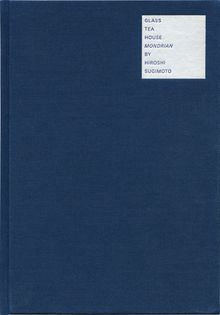 Hiroshi Sugimoto: Glass Tea House Mondrian
Hiroshi Sugimoto: Glass Tea House Mondrian
Published by Walther König, Köln.
Edited with foreword by David Hrankovic. Preface by Pasquale Gagliardi. Text by Annabelle Selldorf.
PUBLISHER
Walther König, Köln
BOOK FORMAT
Hardcover, 6.75 x 9.5 in. / 160 pgs / 76 color / 20 bw.
PUBLISHING STATUS
Pub Date 9/29/2015
Active
DISTRIBUTION
D.A.P. Exclusive
Catalog: SPRING 2016 p. 168
PRODUCT DETAILS
ISBN 9783863357498 FLAT40
List Price: $35.00 CAD $47.50
AVAILABILITY
Out of stock
STATUS: Out of stock Temporarily out of stock pending additional inventory. |
 Hiroshi Sugimoto: Glass Tea House Mondrian
Hiroshi Sugimoto: Glass Tea House Mondrian
Published by Walther König, Köln.
Edited with foreword by David Hrankovic. Preface by Pasquale Gagliardi. Text by Annabelle Selldorf.
PUBLISHER
Walther König, Köln
BOOK FORMAT
Hardcover, 6.75 x 9.5 in. / 160 pgs / 76 color / 20 bw.
PUBLISHING STATUS
Pub Date 9/29/2015
Active
DISTRIBUTION
D.A.P. Exclusive
Catalog: SPRING 2016 p. 168
PRODUCT DETAILS
ISBN 9783863357498 FLAT40
List Price: $35.00 CAD $47.50
AVAILABILITY
Out of stock
STATUS: Out of stock Temporarily out of stock pending additional inventory. |
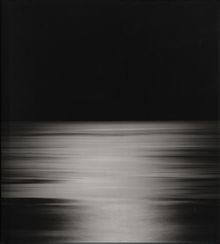 Hiroshi Sugimoto: Seascapes
Hiroshi Sugimoto: Seascapes
Published by Damiani.
Text by Munesuke Mita.
The second in a series of luxurious, beautifully produced volumes each focused on specific bodies of Sugimoto's work, Seascapes presents the complete series of more than 200 Seascapes for the first time in one publication. Some of the photographs included have never before been reproduced.
Hiroshi Sugimoto (born 1948) was born and raised in Tokyo, Japan, where he studied politics and sociology at Rikkyo University, later retraining as an artist at the Art Center College of Design in Los Angeles. He has been active as a photographer since the 1970s. Some of his major photographic series include the Dioramas, Theaters, Portraits, Architecture and Lightning Fields. He currently lives in New York and Tokyo.
PUBLISHER
Damiani
BOOK FORMAT
Clth, 10 x 11 in. / 272 pgs / 220 bw.
PUBLISHING STATUS
Pub Date 10/27/2015
Out of print
DISTRIBUTION
D.A.P. Exclusive
Catalog: FALL 2015 p. 18
PRODUCT DETAILS
ISBN 9788862084161 TRADE
List Price: $70.00 CAD $92.50
AVAILABILITY
Not available
STATUS: Out of print | 00/00/00 For assistance locating a copy, please see our list of recommended out of print specialists |
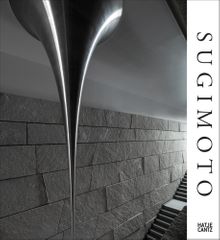 Hiroshi Sugimoto: Conceptual Forms and Mathematical Models
Hiroshi Sugimoto: Conceptual Forms and Mathematical Models
Published by Hatje Cantz.
Introduction by Hiroshi Sugimoto. Text by Klaus Ottmann.
PUBLISHER
Hatje Cantz
BOOK FORMAT
Hardcover, 9 x 10 in. / 96 pgs / 48 color.
PUBLISHING STATUS
Pub Date 3/24/2015
Out of stock indefinitely
DISTRIBUTION
D.A.P. Exclusive
Catalog: SPRING 2015 p. 118
PRODUCT DETAILS
ISBN 9783775739214 TRADE
List Price: $50.00 CAD $67.50
AVAILABILITY
Not available
STATUS: Out of stock indefinitely. |
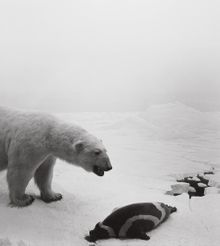 Hiroshi Sugimoto: Dioramas
Hiroshi Sugimoto: Dioramas
Published by Damiani.
Text by Hiroshi Sugimoto.
Hiroshi Sugimoto was born and raised in Tokyo, Japan, where he studied politics and sociology at Rikkyõ University, later retraining as an artist at the Art Center College of Design in Los Angeles, CA. He currently lives in New York and Tokyo.
PUBLISHER
Damiani
BOOK FORMAT
Clth, 10.25 x 11.25 in. / 118 pgs / 56 bw.
PUBLISHING STATUS
Pub Date 9/30/2014
Out of stock indefinitely
DISTRIBUTION
D.A.P. Exclusive
Catalog: FALL 2014 p. 35
PRODUCT DETAILS
ISBN 9788862083270 TRADE
List Price: $65.00 CAD $87.00
AVAILABILITY
Not available
STATUS: Out of stock indefinitely. |
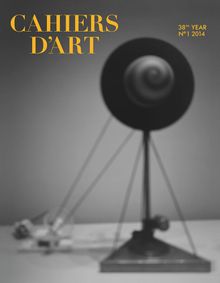 Cahiers d'Art: Hiroshi Sugimoto
Cahiers d'Art: Hiroshi Sugimoto
38th Year
Published by Cahiers d'Art.
Edited by Staffan Ahrenberg, Sam Keller, Hans Ulrich Obrist. Text by Jacques Herzog, Akiko Miki, Daniel Birnbaum.
Cahiers d'Art celebrates the 100th issue of the revue with Hiroshi Sugimoto.
The issue, a true tribute to Sugimoto, is rooted in The World is Dead Today, a story written by Sugimoto for his exhibition at the Palais de Tokyo (2015), in which his photographic works are juxtaposed against his eclectic antiques collection recounting the end of modernity.
Issue No.1 2014 is a rare opportunity to see unpublished works reproduced at the highest standard. Serpentine Gallery co-director Hans Ulrich Obrist interviewed Sugimoto for the issue and Akiko Miki, Chief Curator, Palais de Tokyo, has contributed an important text on the artist’s work.
Hiroshi Sugimoto was born in Japan in 1948. A photographer since the 1970s, his work deals with history and temporal existence by investigating themes of time, empiricism, and metaphysics. His primary series include: Seascapes, Theaters, Dioramas, Portraits (of Madame Tussaud’s wax figures), Architecture, Colors of Shadow, Conceptual Forms and Lightning Fields. Sugimoto has received a number of grants and fellowships, and his work is held in the collections of the Tate Gallery, the Museum of Contemporary Art, Chicago, and the Metropolitan Museum of New York, among many others.
PUBLISHER
Cahiers d'Art
BOOK FORMAT
Paperback, 9.75 x 12.5 in. / 210 pgs / 73 color / 28 bw.
PUBLISHING STATUS
Pub Date 10/21/2014
Active
DISTRIBUTION
D.A.P. Exclusive
Catalog: Publisher Backlist
PRODUCT DETAILS
ISBN 9782851171795 SDNR40
List Price: $100.00 CAD $150.00
AVAILABILITY
In stock
in stock $100.00 Free Shipping UPS GROUND IN THE CONTINENTAL U.S. |
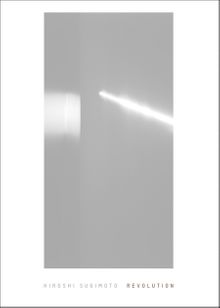 Hiroshi Sugimoto: Revolution
Hiroshi Sugimoto: Revolution
Published by Hatje Cantz.
Text by Armin Zweite.
PUBLISHER
Hatje Cantz
BOOK FORMAT
Hardcover, 12.5 x 12.5 in. / 88 pgs / 33 tritone.
PUBLISHING STATUS
Pub Date 2/28/2013
Out of stock indefinitely
DISTRIBUTION
D.A.P. Exclusive
Catalog: SPRING 2013 p. 65
PRODUCT DETAILS
ISBN 9783775734714 TRADE
List Price: $60.00 CAD $79.00
AVAILABILITY
Not available
STATUS: Out of stock indefinitely. |
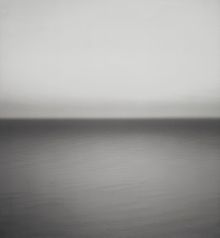 Hiroshi Sugimoto
Hiroshi Sugimoto
Published by Hatje Cantz.
Edited by Pia Müller-Tamm. Text by Hiroshi Sugimoto, Kerry Brougher.
Hiroshi Sugimoto was born and raised in Tokyo, Japan, where he studied politics and sociology at St. Paul's University, later retraining as an artist at the Art Center College of Art and Design in Los Angeles, CA. He currently lives in New York City.
PUBLISHER
Hatje Cantz
BOOK FORMAT
Clth, 10.25 x 11.25 in. / 400 pgs / 47 color / 181 duotone.
PUBLISHING STATUS
Pub Date 10/31/2010
Out of print
DISTRIBUTION
D.A.P. Exclusive
Catalog: FALL 2010 p. 172
PRODUCT DETAILS
ISBN 9783775724128 TRADE
List Price: $125.00 CAD $170.00
AVAILABILITY
Not available
STATUS: Out of print | 00/00/00 For assistance locating a copy, please see our list of recommended out of print specialists |
 Looking through Duchamp’s Door
Looking through Duchamp’s Door
Art and Perspective in the Work of Duchamp, Sugimoto and Jeff Wall
Published by Walther König, Köln.
By Hans Belting.
PUBLISHER
Walther König, Köln
BOOK FORMAT
Paperback, 6 x 9.25 in. / 192 pgs / 35 color / 25 bw.
PUBLISHING STATUS
Pub Date 2/28/2010
Active
DISTRIBUTION
D.A.P. Exclusive
Catalog: SPRING 2010 p. 69
PRODUCT DETAILS
ISBN 9783865606051 TRADE
List Price: $49.95 CAD $67.50
AVAILABILITY
Out of stock
STATUS: Out of stock Temporarily out of stock pending additional inventory. |
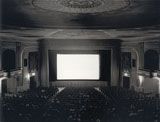 Hiroshi Sugimoto: Theatres
Hiroshi Sugimoto: Theatres
Published by Walther König, Köln.
Essay by Hans Belting.
PUBLISHER
Walther König, Köln
BOOK FORMAT
Slipcased, 11.5 x 12 in. / 224 pgs / 96 bw.
PUBLISHING STATUS
Pub Date 3/1/2006
Out of print
DISTRIBUTION
D.A.P. Exclusive
Catalog: SPRING 2006 p. 143
PRODUCT DETAILS
ISBN 9780615115962 SDNR30
List Price: $195.00 CAD $240.00
AVAILABILITY
Not available
STATUS: Out of print | 00/00/00 For assistance locating a copy, please see our list of recommended out of print specialists |
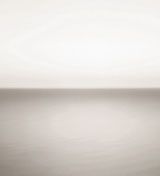 Hiroshi Sugimoto
Hiroshi Sugimoto
Published by Hatje Cantz.
Essays by David Elliott, Kerry Brougher and Hiroshi Sugimoto.
PUBLISHER
Hatje Cantz
BOOK FORMAT
Hardcover, 10 x 11 in. / 368 pgs / 45 color.
PUBLISHING STATUS
Pub Date 11/15/2005
Out of print
DISTRIBUTION
D.A.P. Exclusive
Catalog: FALL 2005 p. 19
PRODUCT DETAILS
ISBN 9783775716406 TRADE
List Price: $95.00 CAD $115.00
AVAILABILITY
Not available
STATUS: Out of print | 11/25/2008 For assistance locating a copy, please see our list of recommended out of print specialists |
 Hiroshi Sugimoto: Architecture
Hiroshi Sugimoto: Architecture
Published by D.A.P./Museum of Contemporary Art, Chicago.
Photographs by Hiroshi Sugimoto. Edited by Francesco Bonami. Contributions by John Yau. Text by Marco de Michelis, Robert Fitzpatrick.
PUBLISHER
D.A.P./Museum of Contemporary Art, Chicago
BOOK FORMAT
Hardcover, 10.75 x 12 in. / 168 pgs / 68 tritone.
PUBLISHING STATUS
Pub Date 3/2/2003
Out of print
DISTRIBUTION
D.A.P. Exclusive
Catalog: SPRING 2003
PRODUCT DETAILS
ISBN 9781891024542 TRADE
List Price: $75.00 CAD $90.00
AVAILABILITY
Not available
STATUS: Out of print | 00/00/00 For assistance locating a copy, please see our list of recommended out of print specialists |
 Sugimoto: Portraits
Sugimoto: Portraits
Published by Guggenheim Museum Publications.
Edited by Nancy Spector and Tracey Bashkoff. Essays by Norman Bryson, Thomas Kellein and Carol Armstrong.
PUBLISHER
Guggenheim Museum Publications
BOOK FORMAT
Hardcover, 11 x 12 in. / 170 pgs / 75 duotone.
PUBLISHING STATUS
Pub Date 7/2/2003
Out of print
DISTRIBUTION
D.A.P. Exclusive
Catalog: FALL 2003
PRODUCT DETAILS
ISBN 9780892072897 TRADE
List Price: $40.00 CAD $50.00
AVAILABILITY
Not available
STATUS: Out of print | 8/1/2007 For assistance locating a copy, please see our list of recommended out of print specialists |
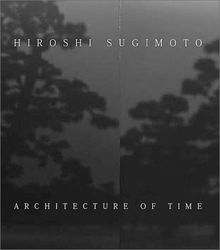 Hiroshi Sugimoto
Hiroshi Sugimoto
Architecture of Time
Published by Kunsthaus Bregenz.
Edited by Eckhard Schneider. Essays by Thomas Kellein and Hiroshi Sugimoto.
PUBLISHER
Kunsthaus Bregenz
BOOK FORMAT
Hardcover, 11.5 x 12.5 in. / 120 pgs / 13 color / 5 duotone / 27 tritone
PUBLISHING STATUS
Pub Date 10/2/2002
Out of print
DISTRIBUTION
D.A.P. Exclusive
Catalog: FALL 2002
PRODUCT DETAILS
ISBN 9783883755632 TRADE
List Price: $50.00 CAD $60.00
AVAILABILITY
Not available
STATUS: Out of print | 6/1/2005 For assistance locating a copy, please see our list of recommended out of print specialists |
